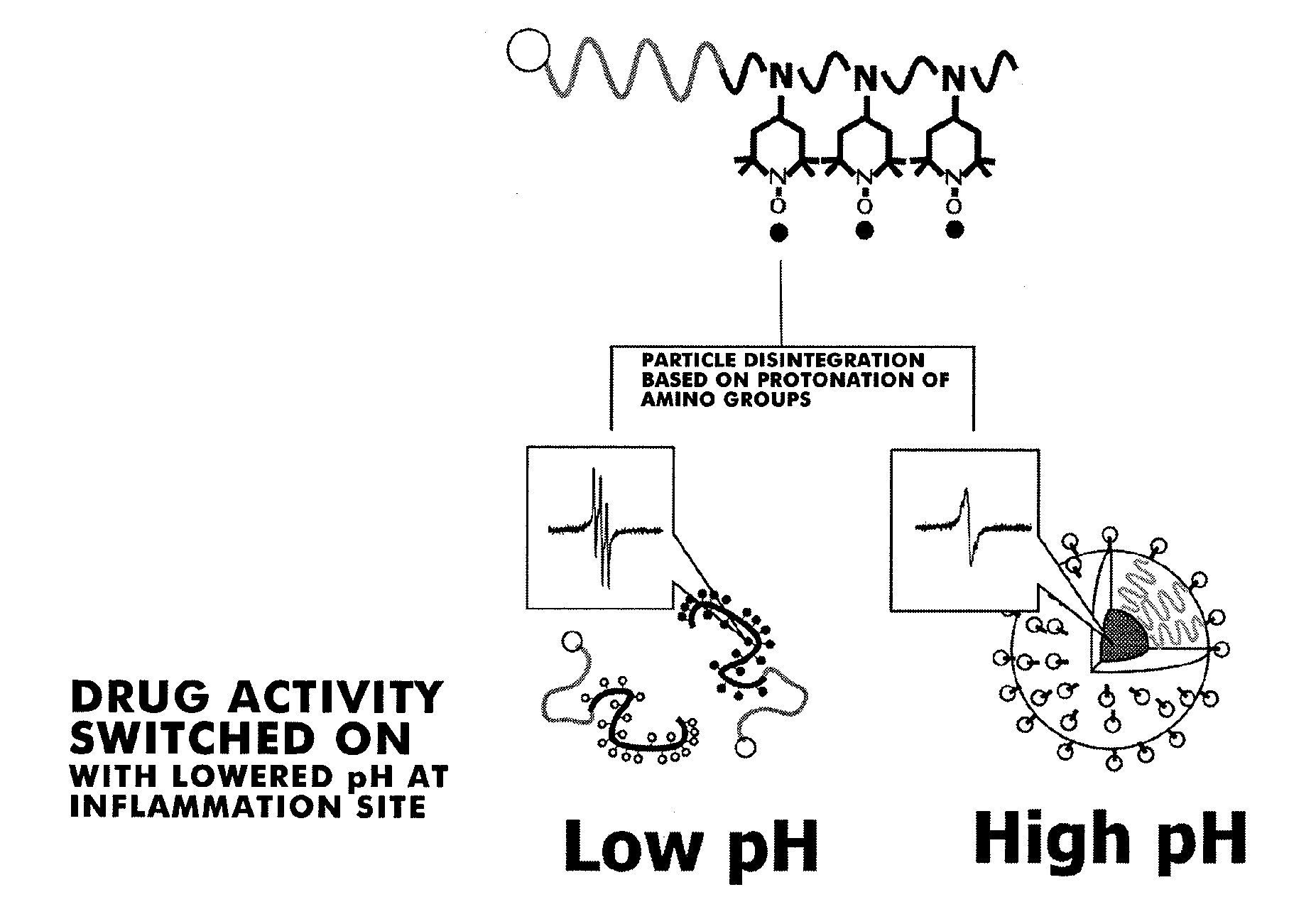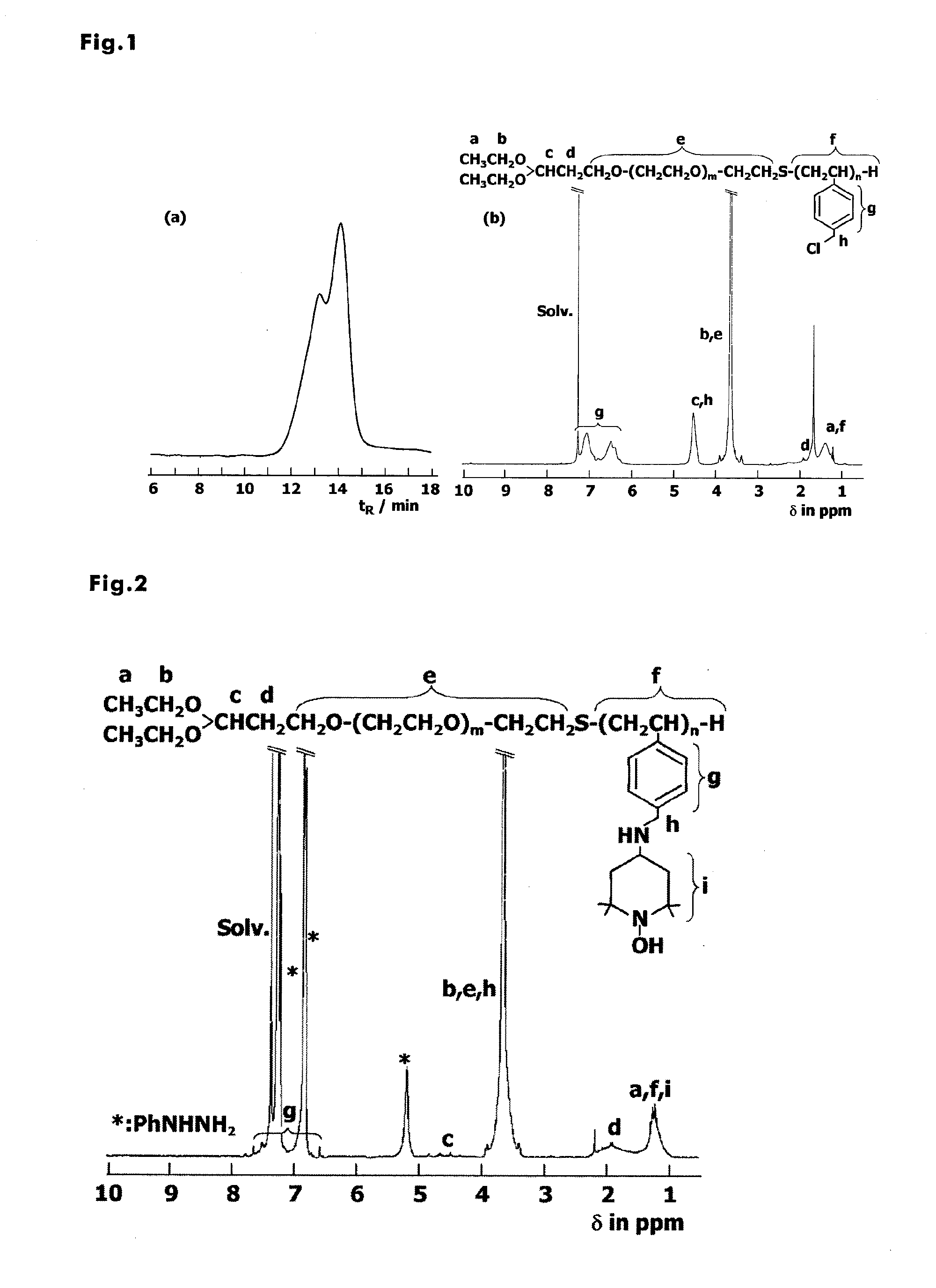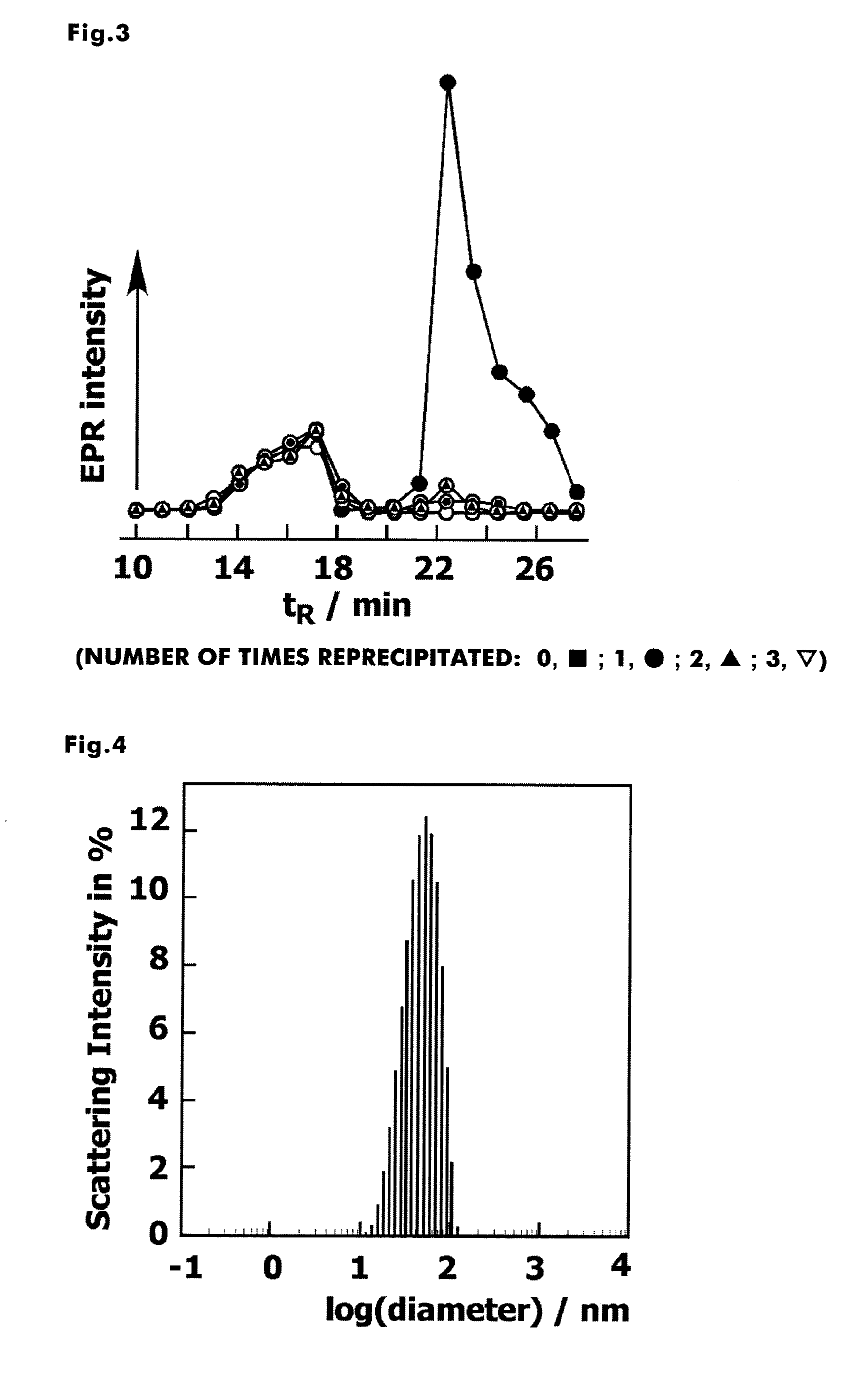Polymerized cyclic nitroxide radical compound and use thereof
a technology polymerization, which is applied in the direction of drug compositions, dispersed delivery, metabolic disorders, etc., can solve the problems of no longer being able to function as radical scavengers, reducing the therapeutic effect of cyclic nitroxide radicals alone as contrast media or therapeutic agents, and achieving the effect of reducing in a short time or readily
- Summary
- Abstract
- Description
- Claims
- Application Information
AI Technical Summary
Benefits of technology
Problems solved by technology
Method used
Image
Examples
preparation example 1
Synthesis of poly(ethylene glycol)-b-poly(chloromethylstyrene) Having an Acetal Group at the α-end (acetal-PEG-b-PCMS)
[0140]Acetal-PEG-b-PCMS was synthesized according to the following Synthesis Scheme 1:
[0141]A heterobifunctional poly(ethylene glycol) (acetal-PEG-SH) (Mn: 4,600; 0.02 mmol, 92 mg) having an acetal group at the α-end and a thiol group at the ω-end was added to a reaction container. Next, the interior of the reaction container was turned into nitrogen atmosphere by repeating three times the operation of vacuuming the interior of the reaction container and blowing in nitrogen gas. To the reaction container, 1 mL of a solution of azobisisobutyronitrile / benzene (0.01 mmol / mL) and chloromethylstyrene (1 mmol, 0.138 mL), was added, heated to 60° C. and stirred for 24 hours. When the reaction mixture was poured into hexane, a white precipitation was generated. In order to eliminate poly(chloromethylstyrene) homopolymer, the obtained precipitate was put under washing operati...
preparation example 2
Synthesis of Block Polymer Having TEMPO Bonded Through an Imino Bond (acetal-PEG-b-PCMS-N-TEMPO)
[0143]Acetal-PEG-b-PCMS (Mn: 7,900; 40 mg, 5.2 μmol) was added to a reaction container. Next, 4-amino-TEMPO (88 mg, 520 mmol) was dissolved in 2 mL of dimethylsulfoxide (DMSO) and added to the reaction container, and stirring was performed at room temperature for 5 hours. After the end of the reaction, the reaction mixture was poured into 2-propanol, which had been cooled to −15° C., next, precipitation was performed three times using 2-propanol and then benzene freeze-drying was performed. The yield was 76.3%.
[0144]From the results of 1H NMR measurements, it was observed that 100% chloromethyl group reacted and TEMPO was introduced (FIG. 2). In addition, fractionation was performed using size-exclusion chromatography, and the ESR signal in each fraction was measured. As a result, from the fact that the ESR signal of non-reacted amino-TEMPO seen at 20 minutes to 27 minutes disappeared as ...
preparation example 3
Synthesis of Block Polymer Having TEMPO Bonded Through an Ether Bond (methoxy-PEG-b-PCMS-O-TEMPO)
[0145]Methoxy-PEG-b-PCMS (Mn: 7,900; 200 mg, 30.6 μmol) was added to a reaction container and dissolved in 1 mL of dimethyl formamide (DMF). Next, 4-hydroxy-TEMPO (260 mg, 1.53 mmol) and NaH (70.3 mg, 3 mmol) were dissolved in 2 mL of DMF and added to the reaction container, and stirring was performed at room temperature for 5 hours. After the end of the reaction, the reaction mixture was poured into 2-propanol, which had been cooled to −15° C., next, precipitation was performed three times using 2-propanol and then benzene freeze-drying was performed to obtain the target methoxy-PEG-b-PCMS-O-TEMPO. The yield was 70.0%.
PUM
| Property | Measurement | Unit |
|---|---|---|
| Fraction | aaaaa | aaaaa |
| Fraction | aaaaa | aaaaa |
| Electrical resistance | aaaaa | aaaaa |
Abstract
Description
Claims
Application Information
 Login to View More
Login to View More - R&D
- Intellectual Property
- Life Sciences
- Materials
- Tech Scout
- Unparalleled Data Quality
- Higher Quality Content
- 60% Fewer Hallucinations
Browse by: Latest US Patents, China's latest patents, Technical Efficacy Thesaurus, Application Domain, Technology Topic, Popular Technical Reports.
© 2025 PatSnap. All rights reserved.Legal|Privacy policy|Modern Slavery Act Transparency Statement|Sitemap|About US| Contact US: help@patsnap.com



